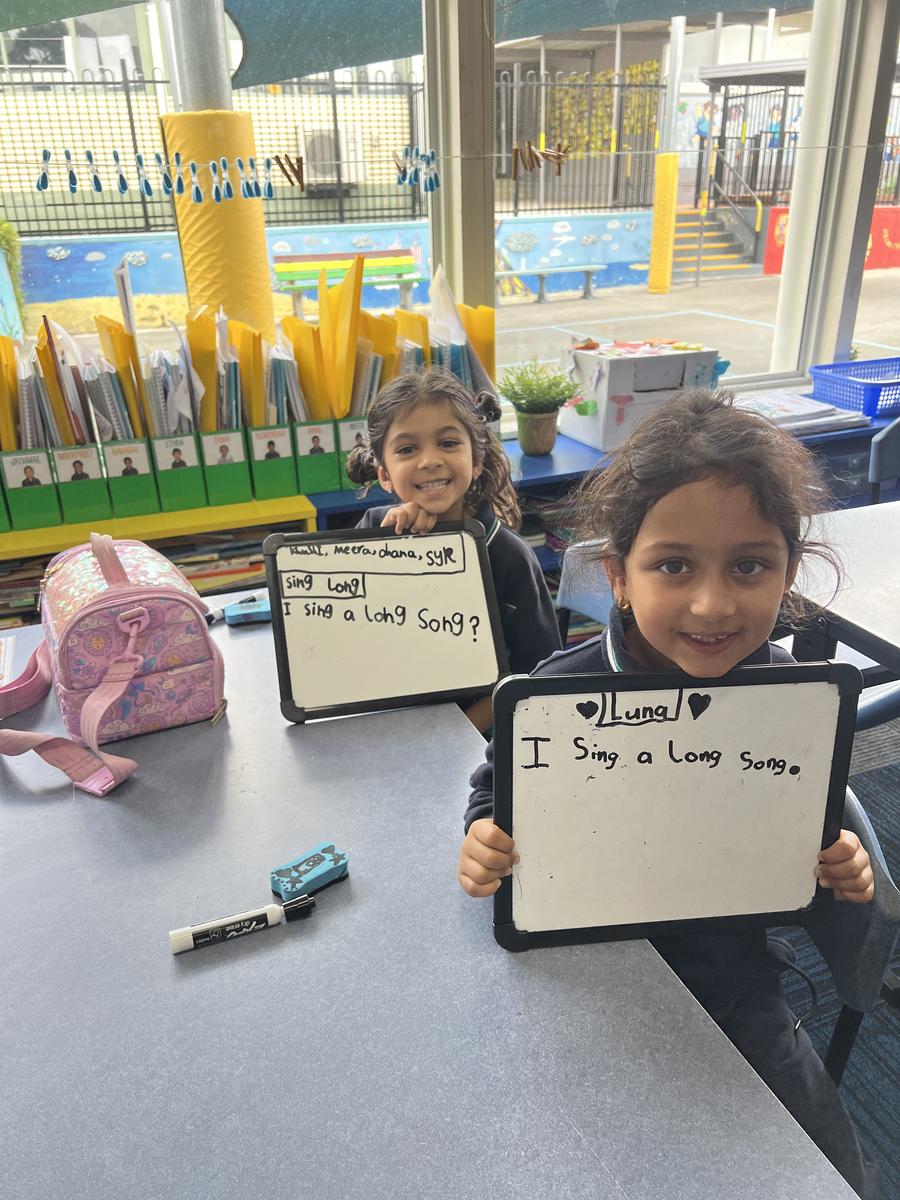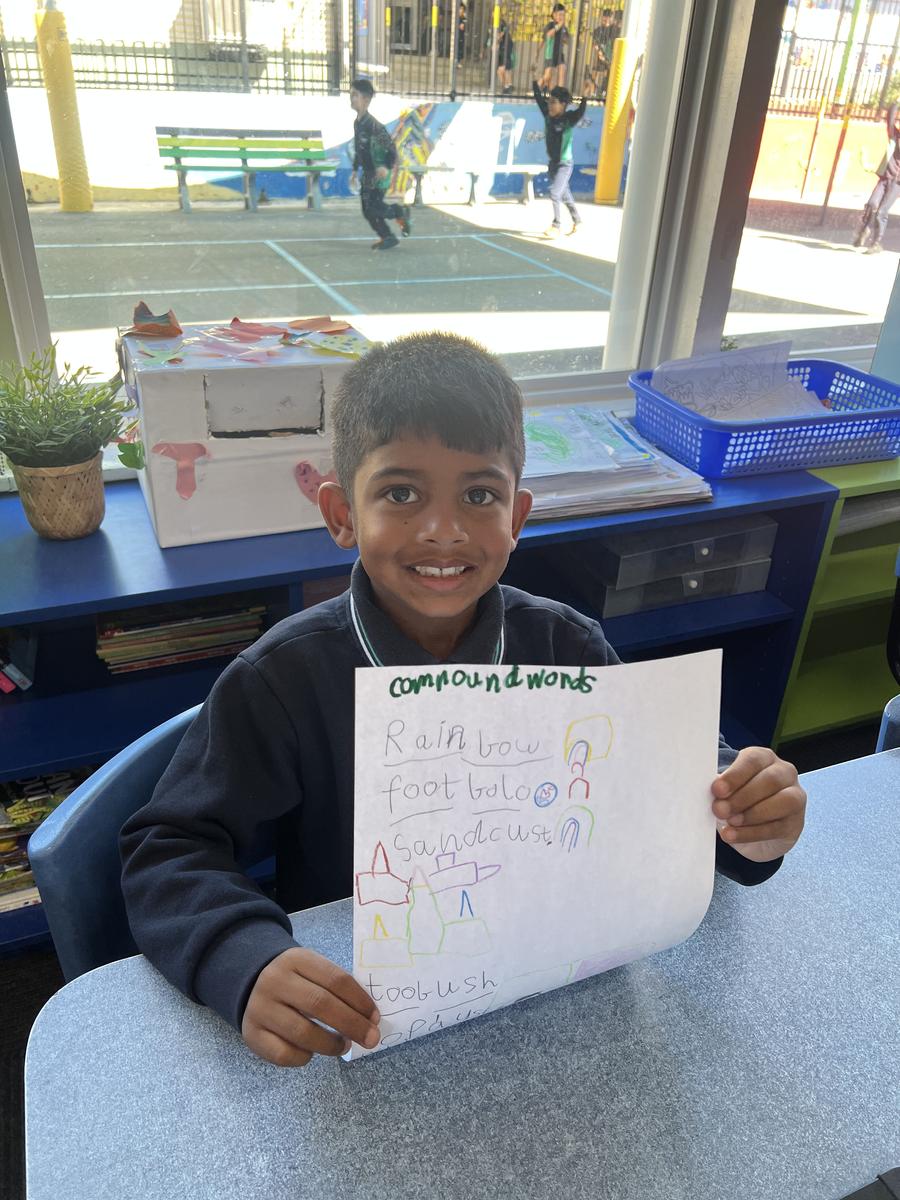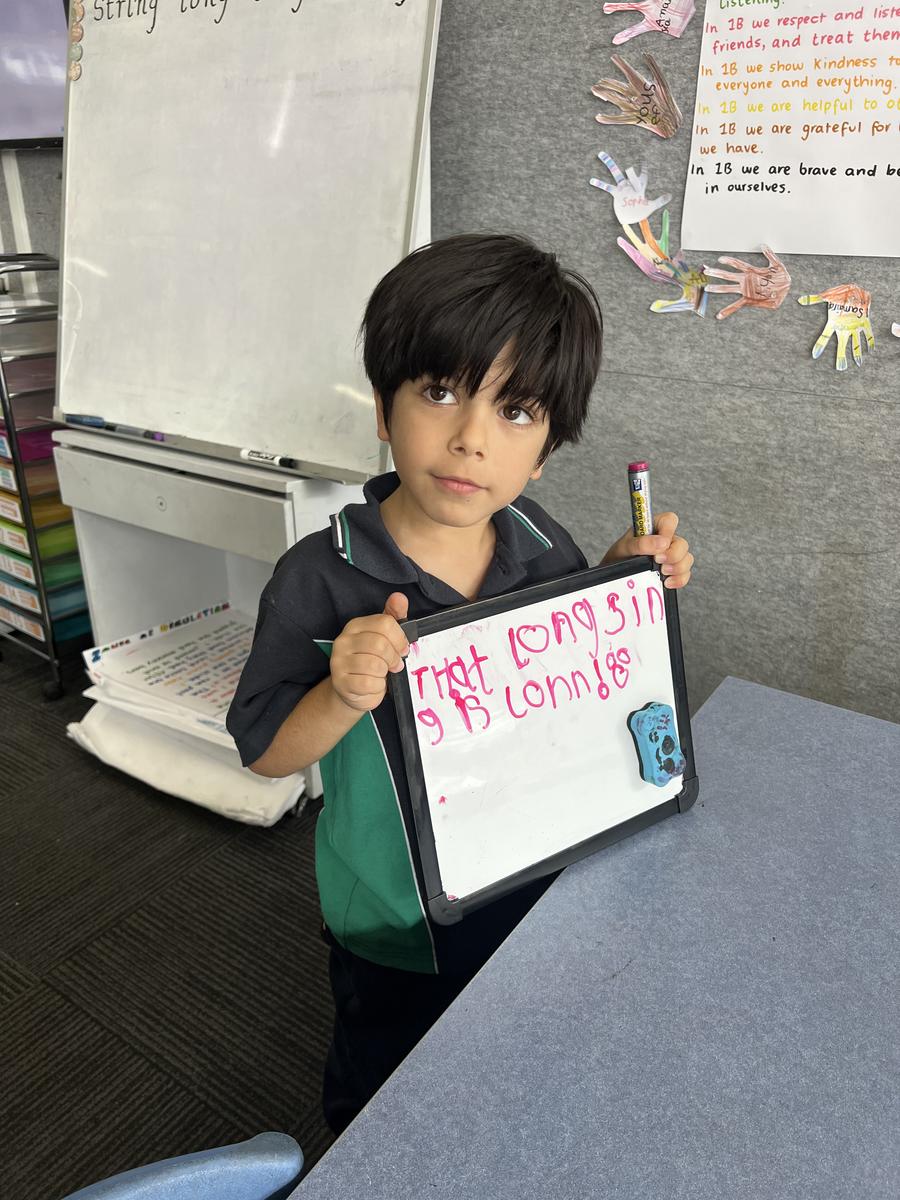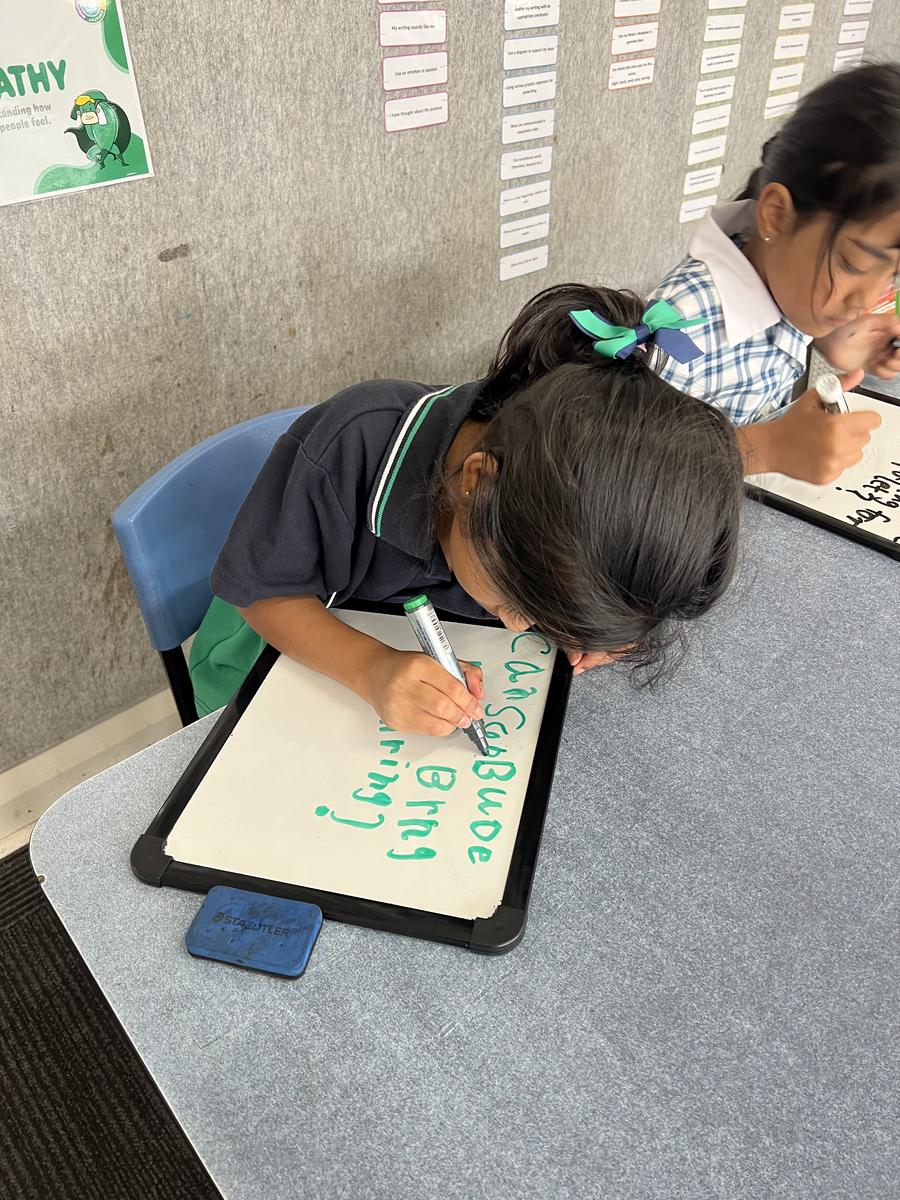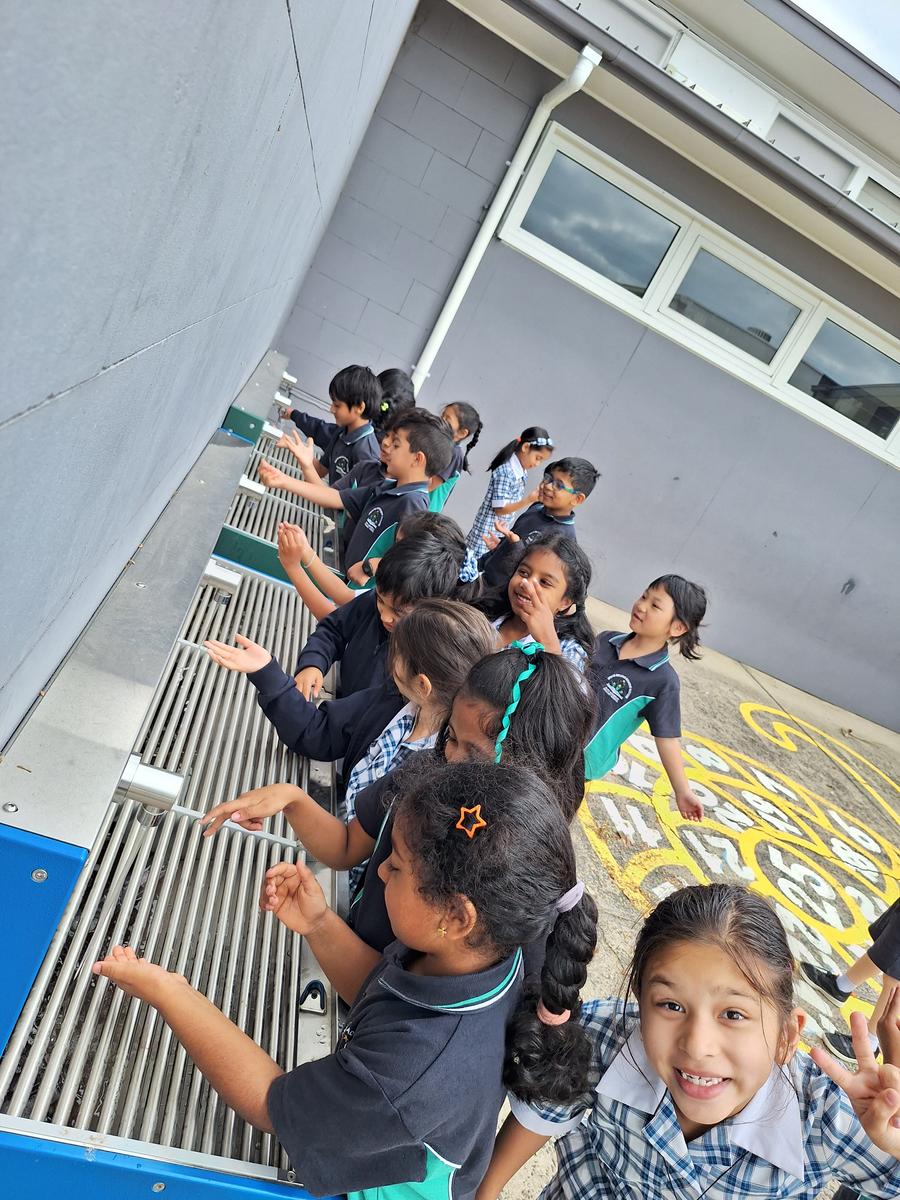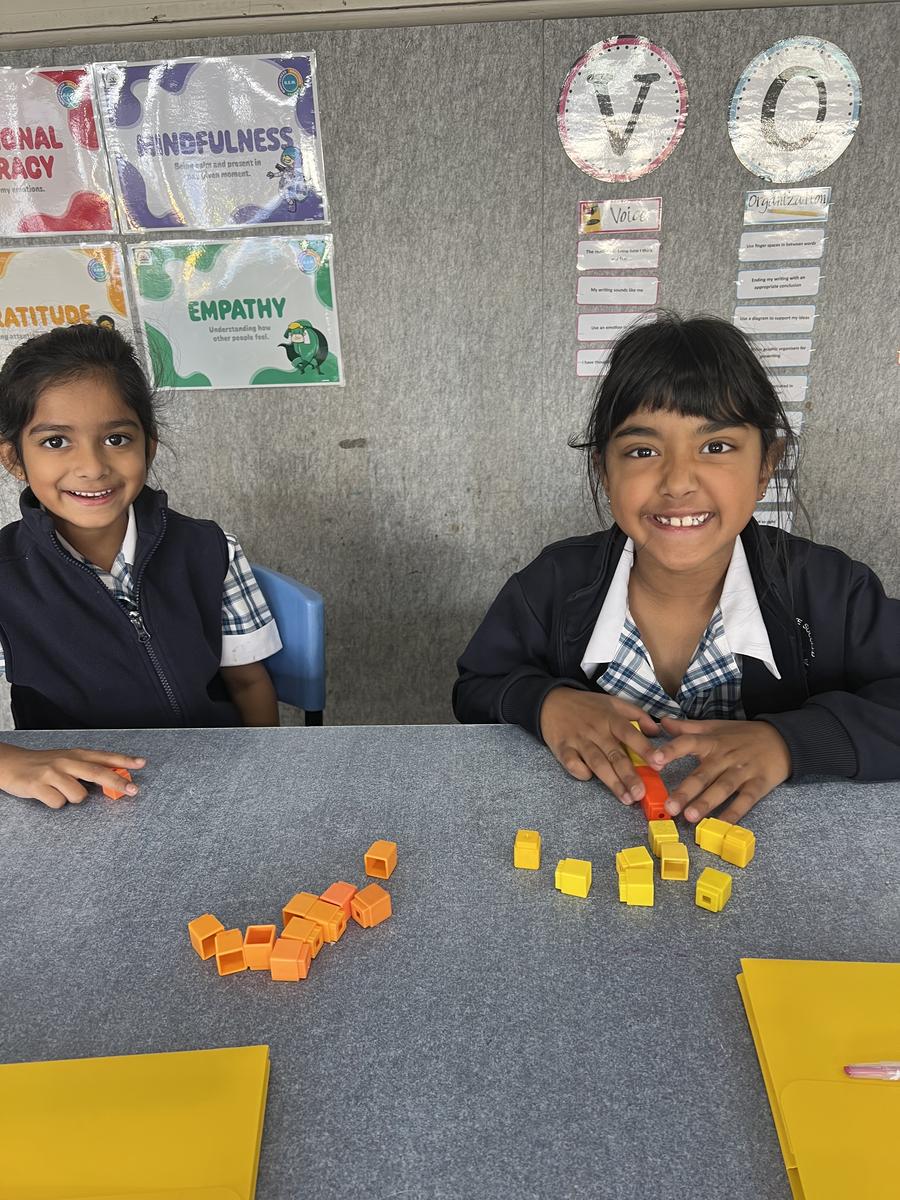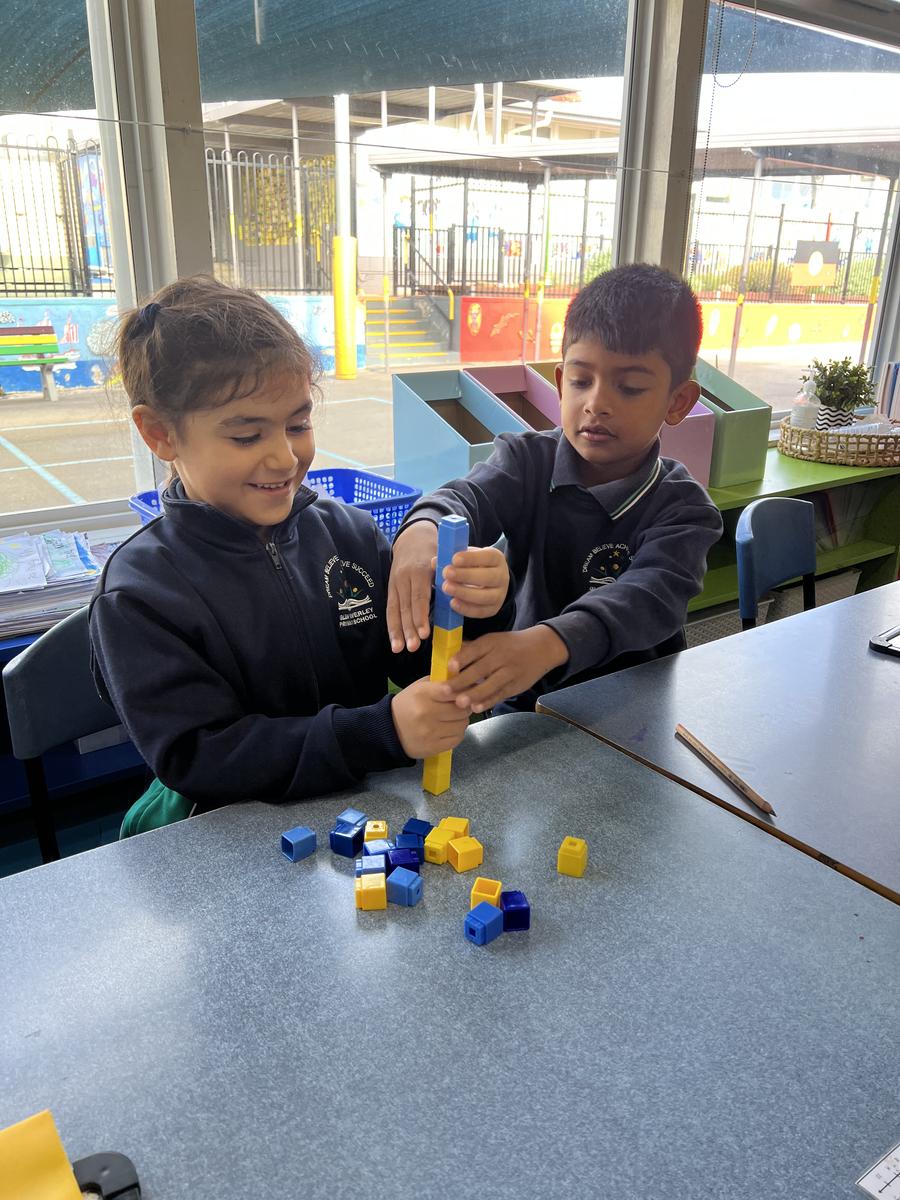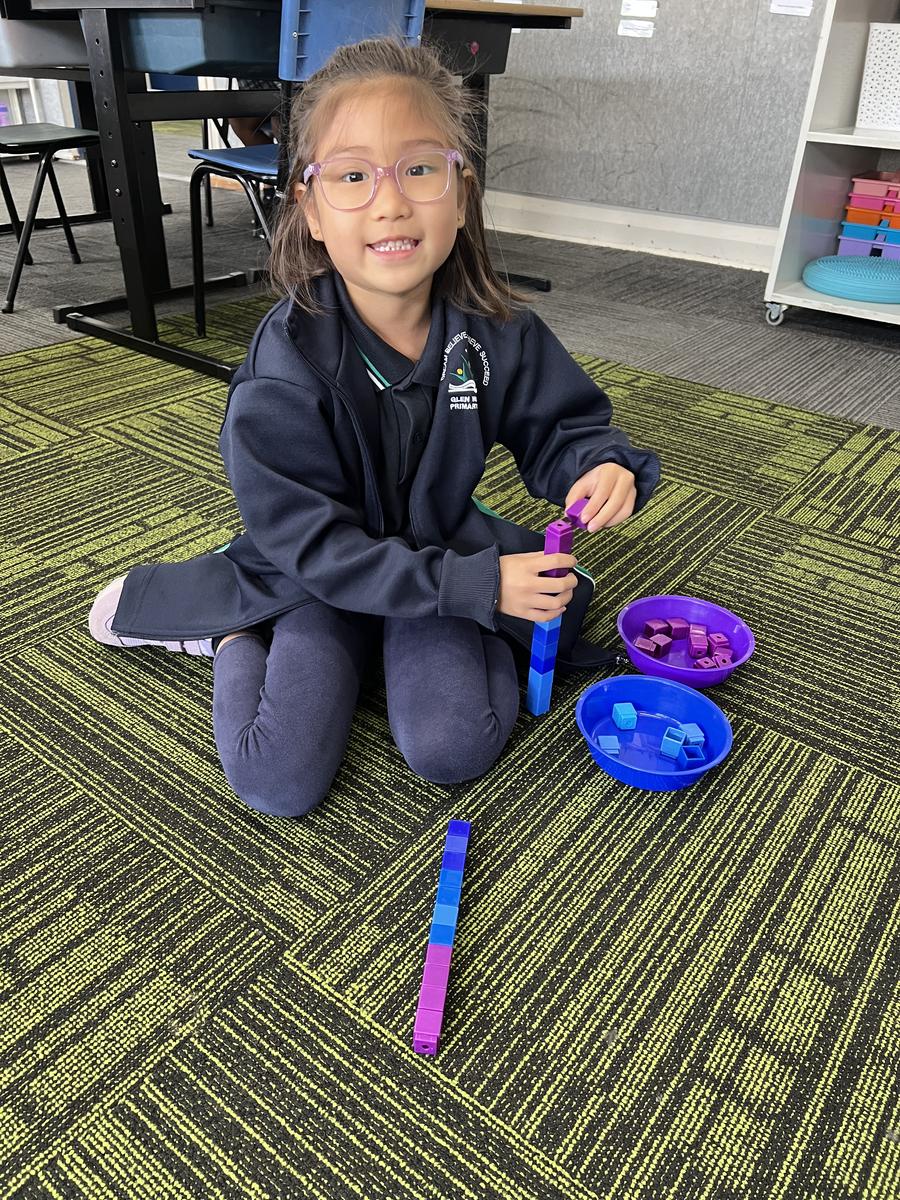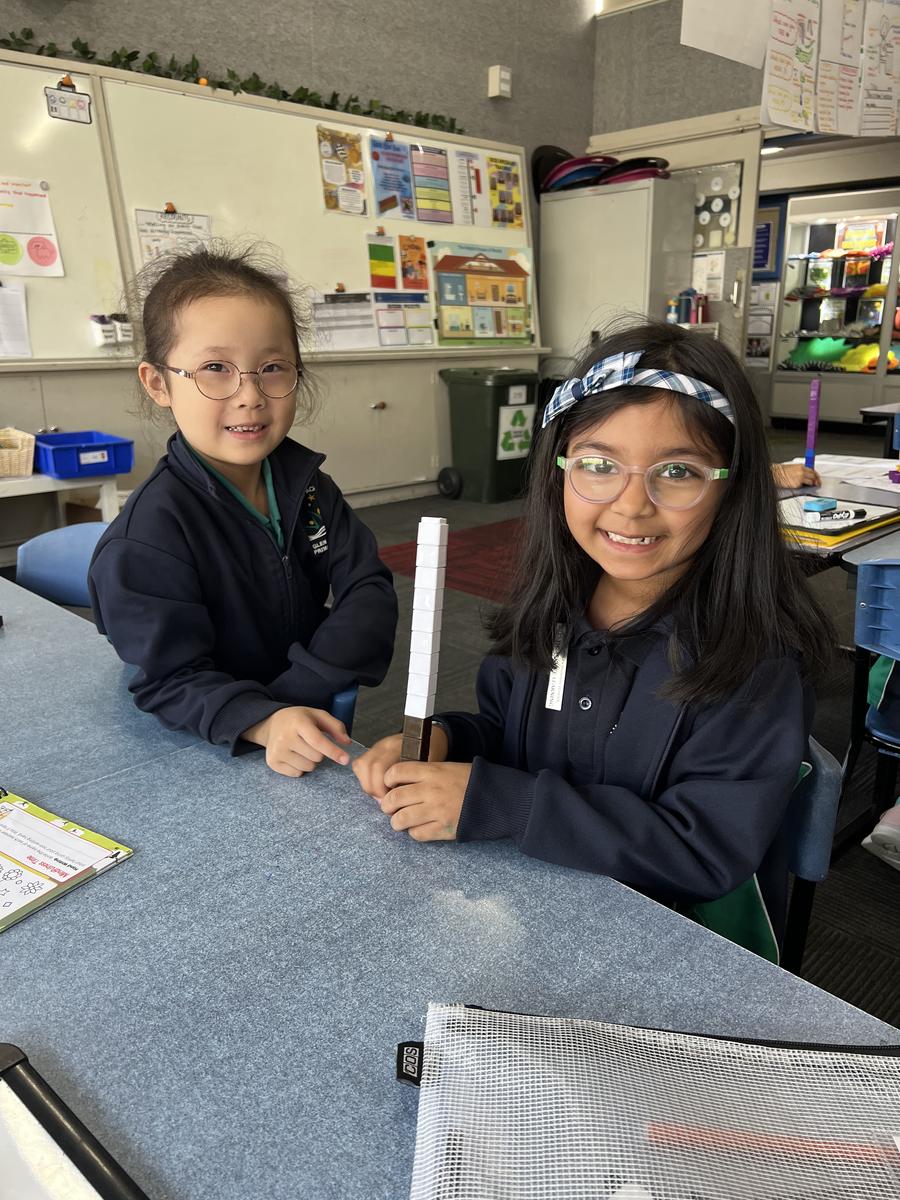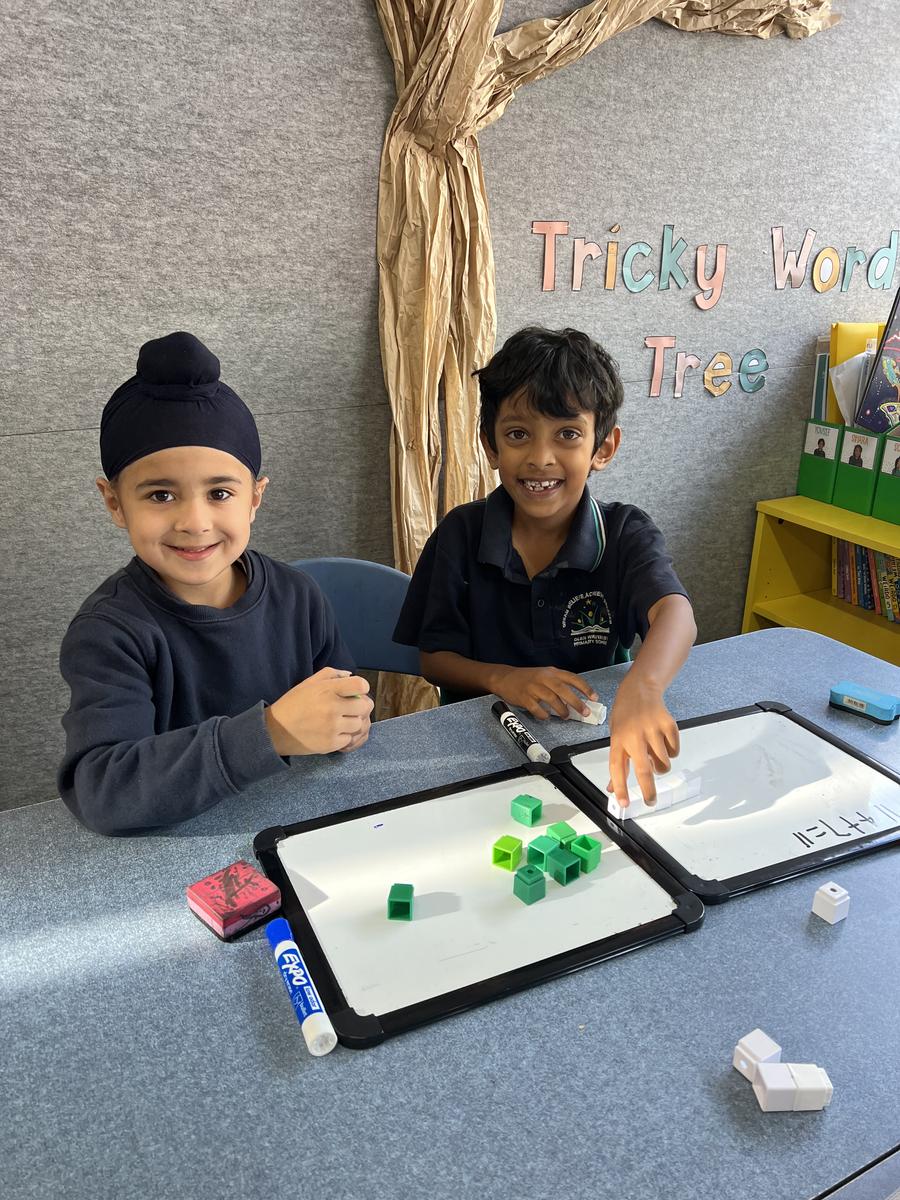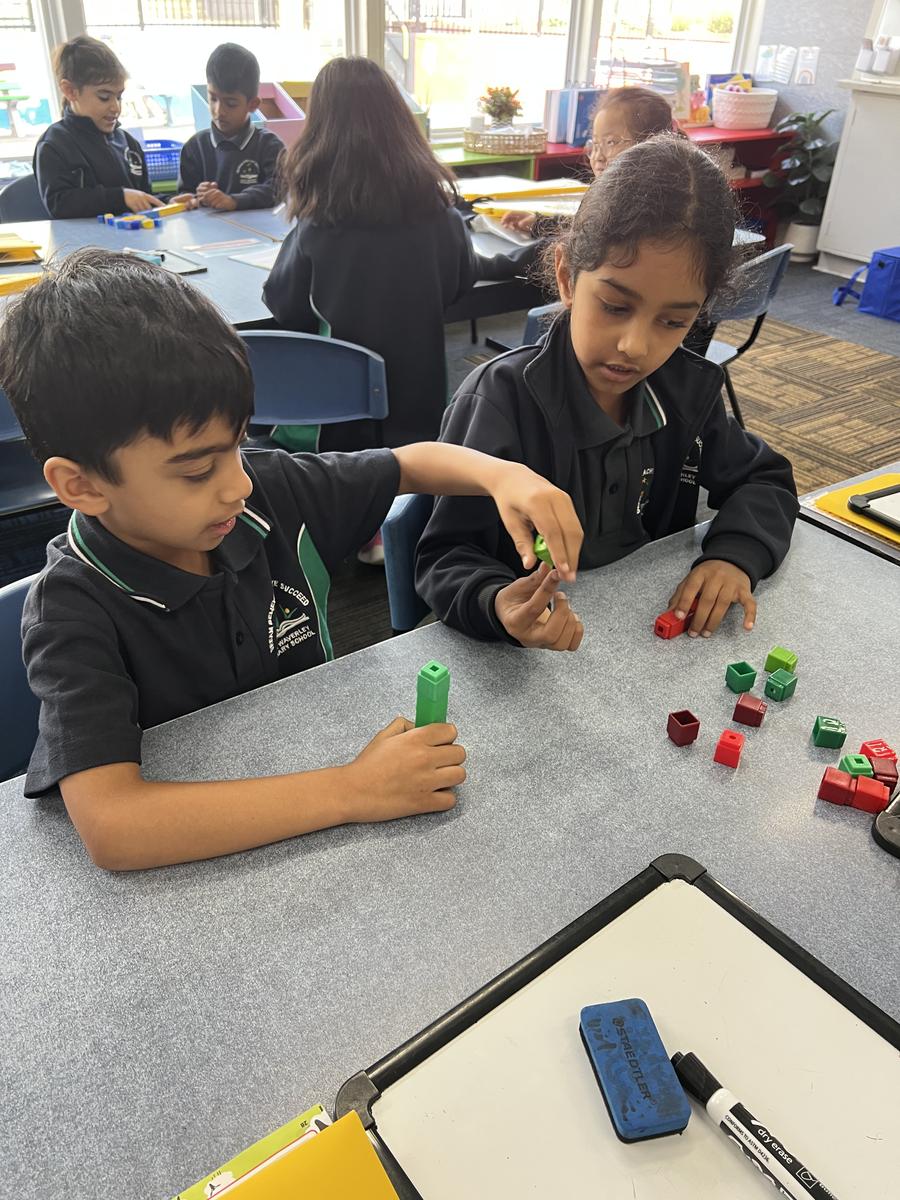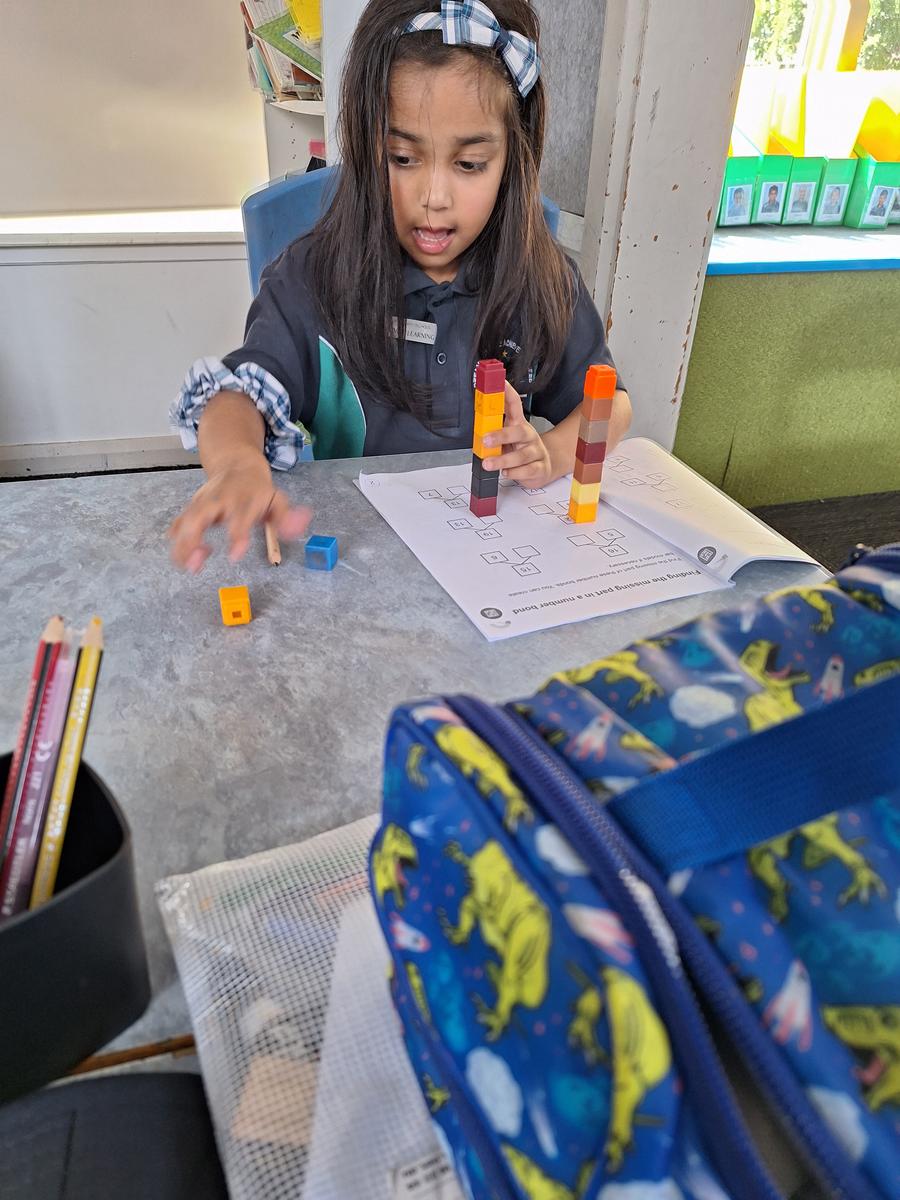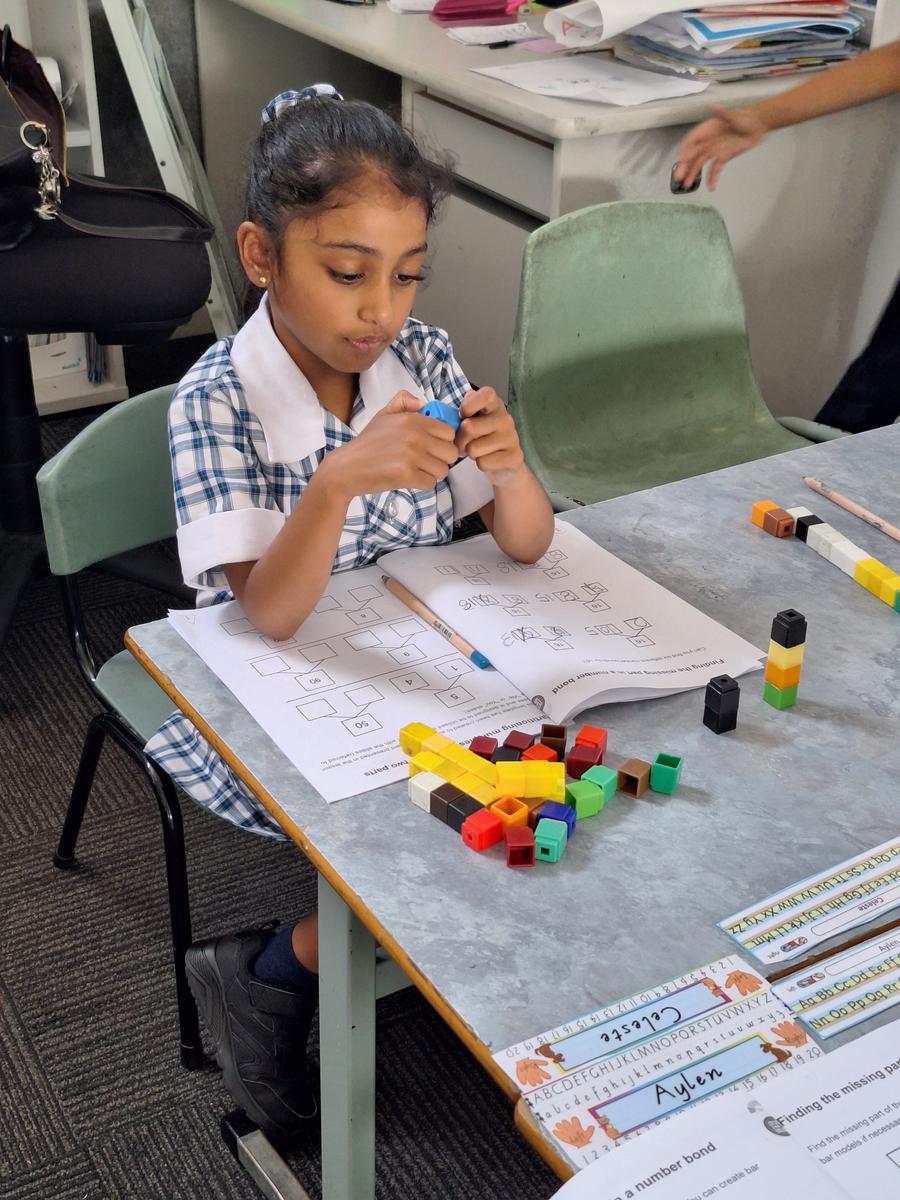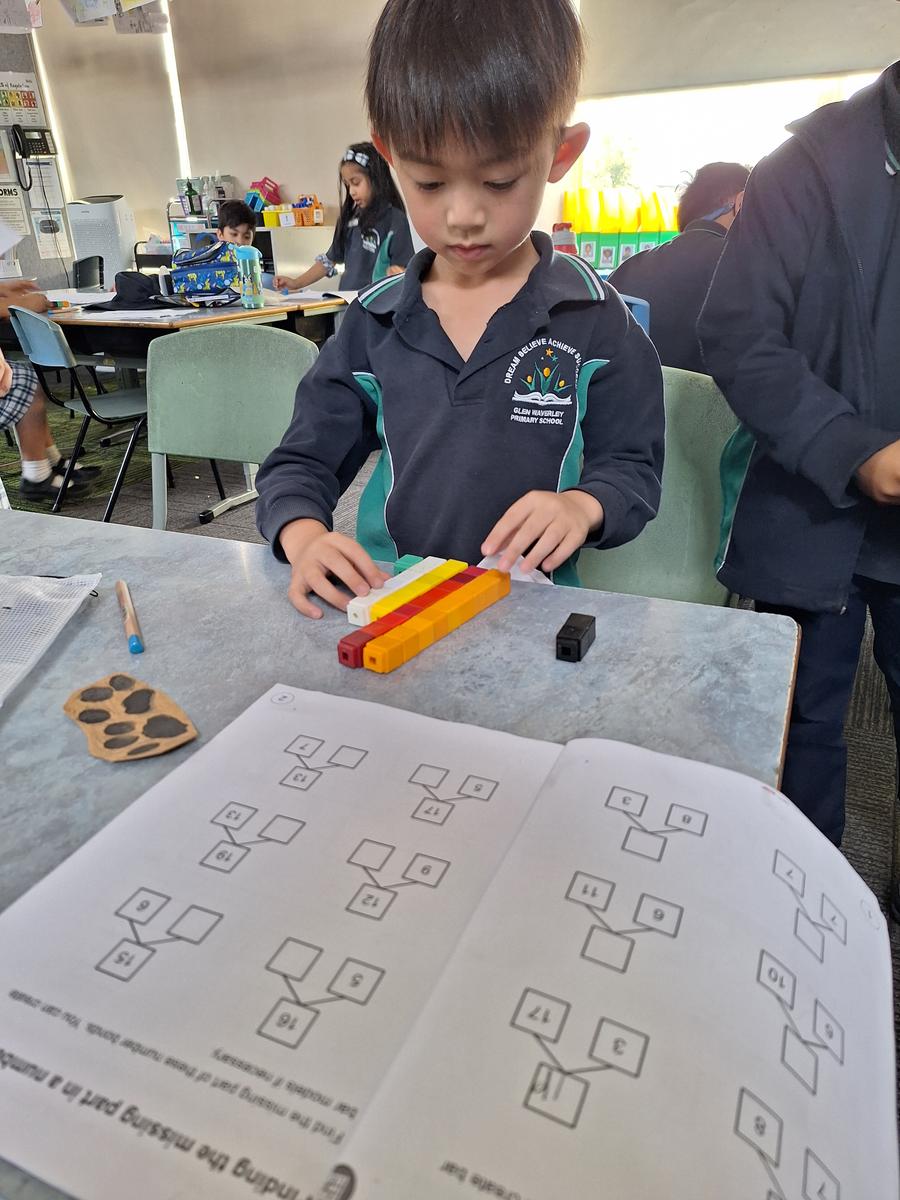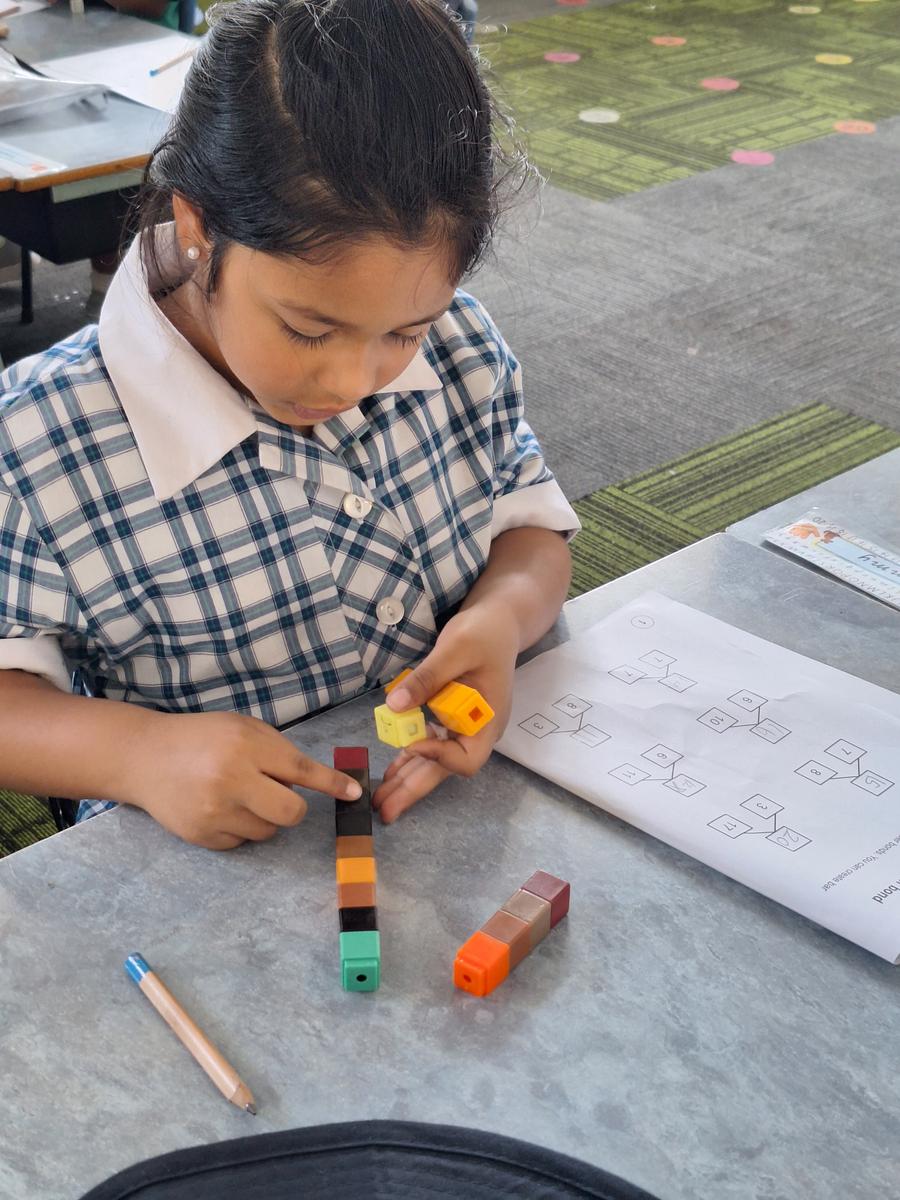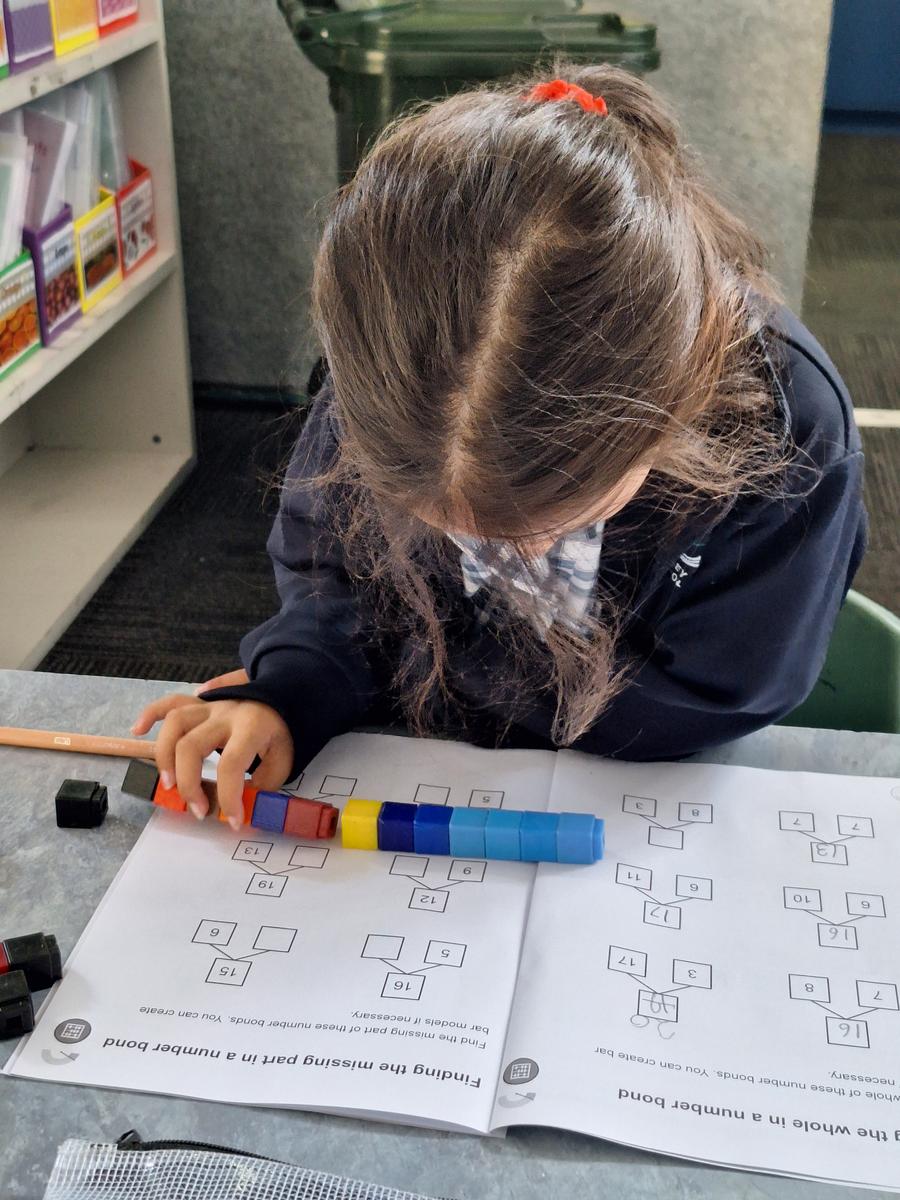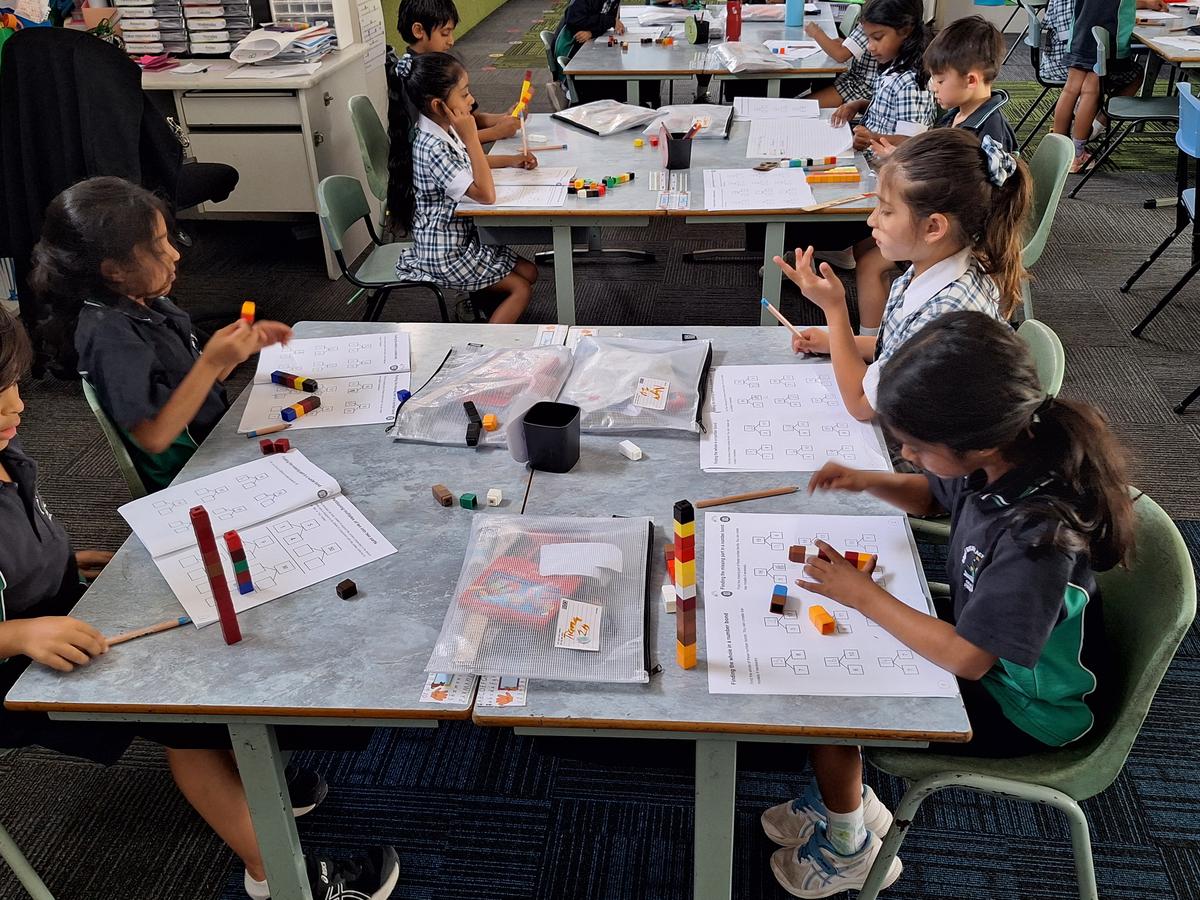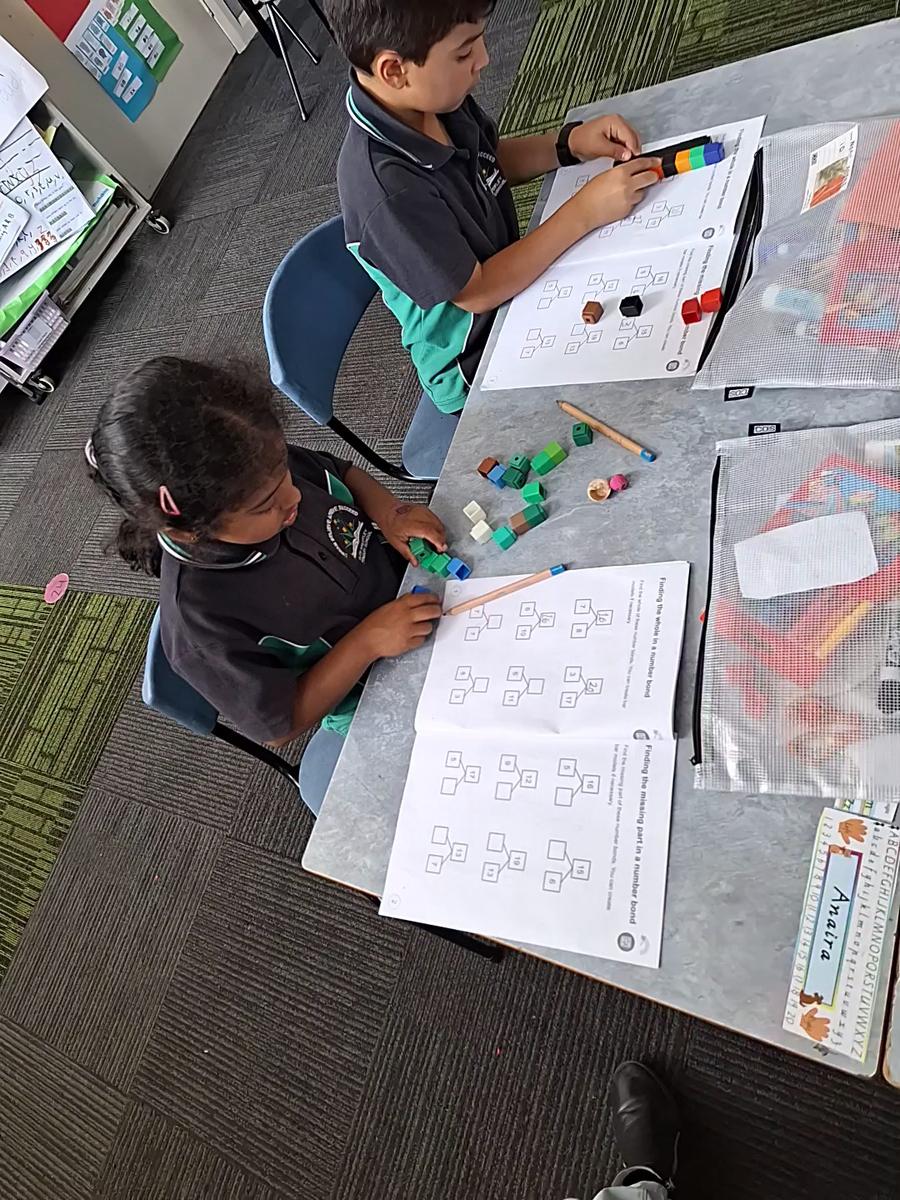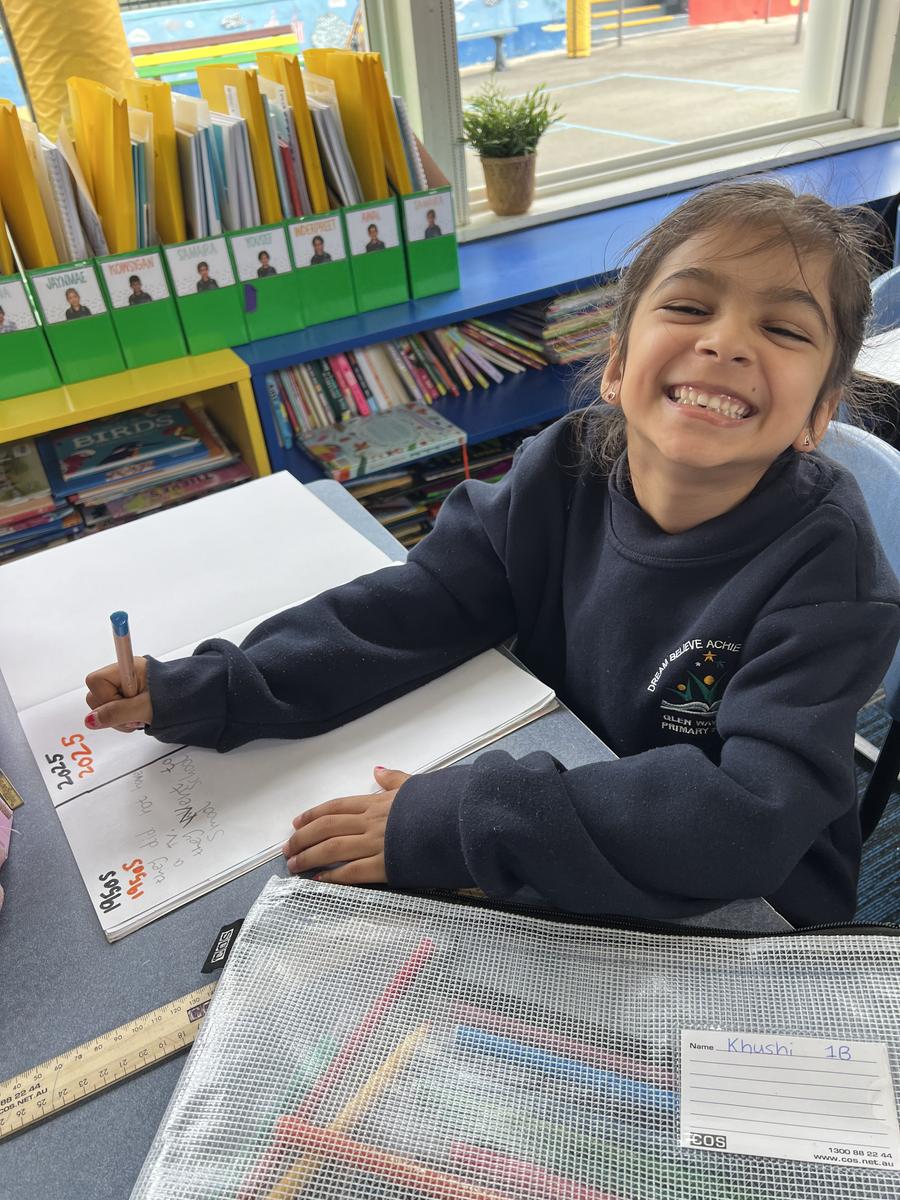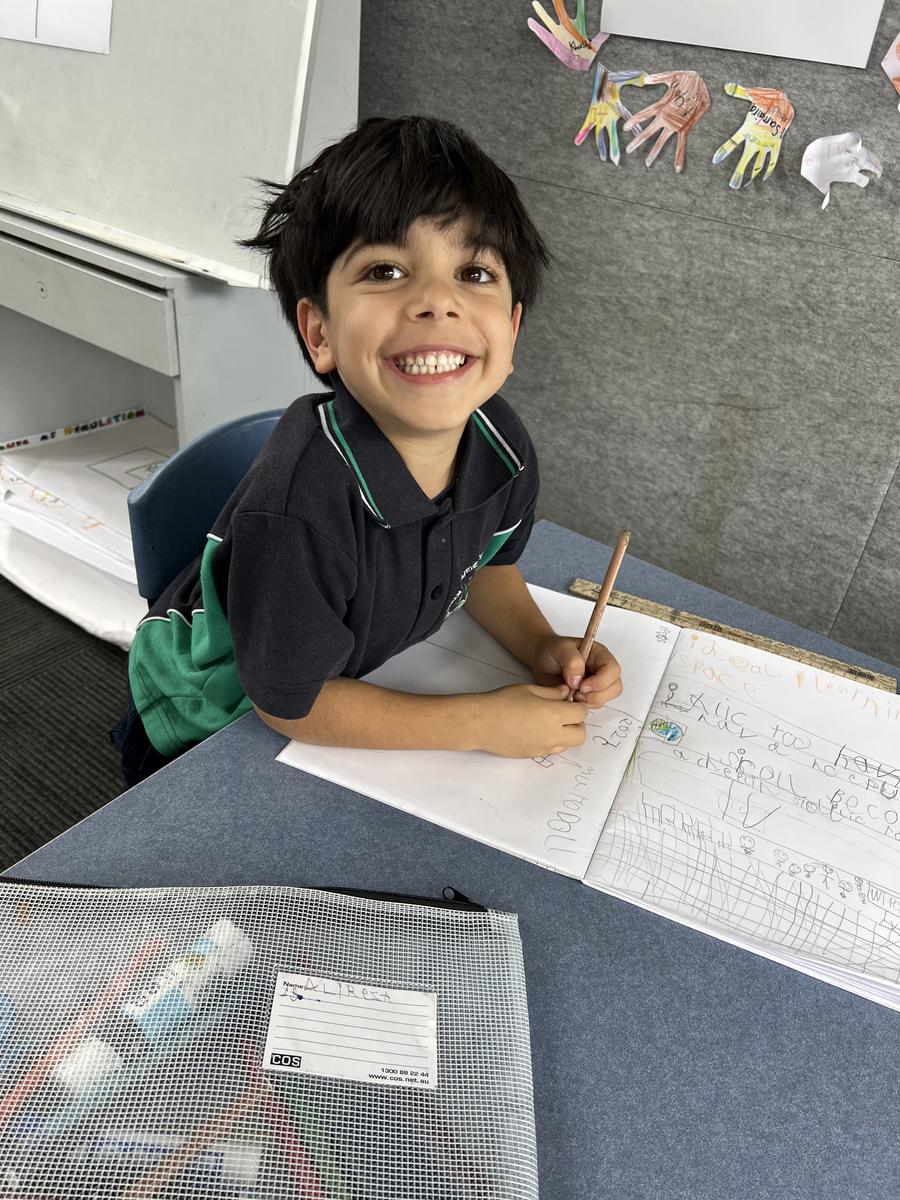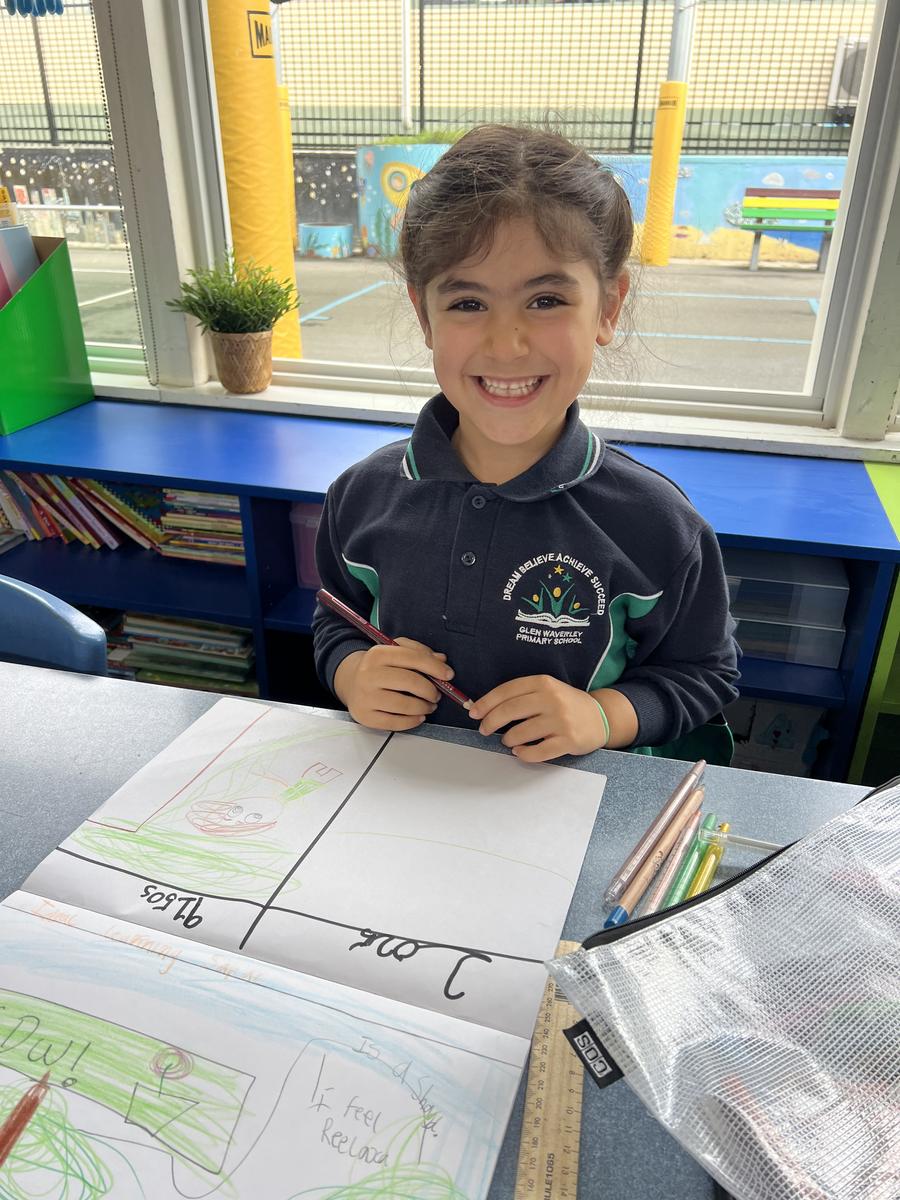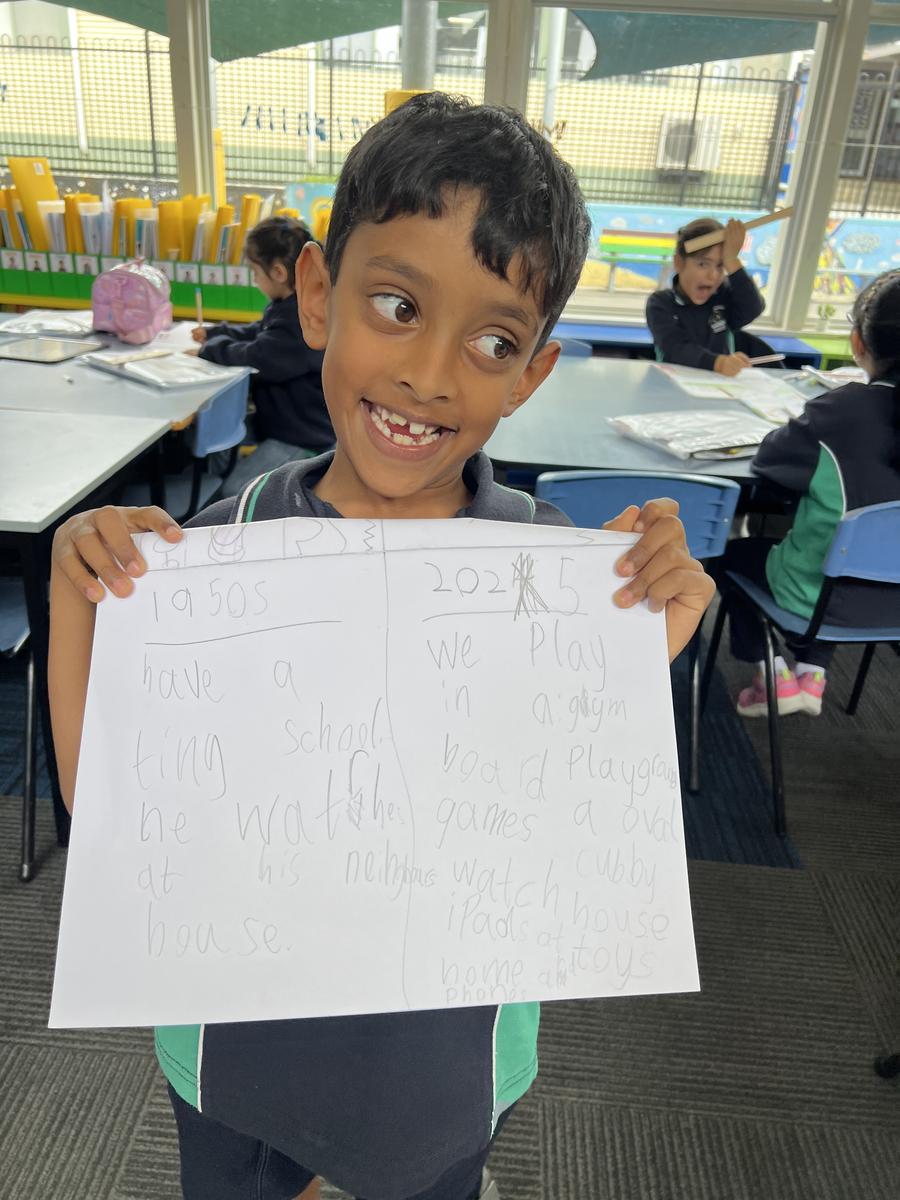Term Two
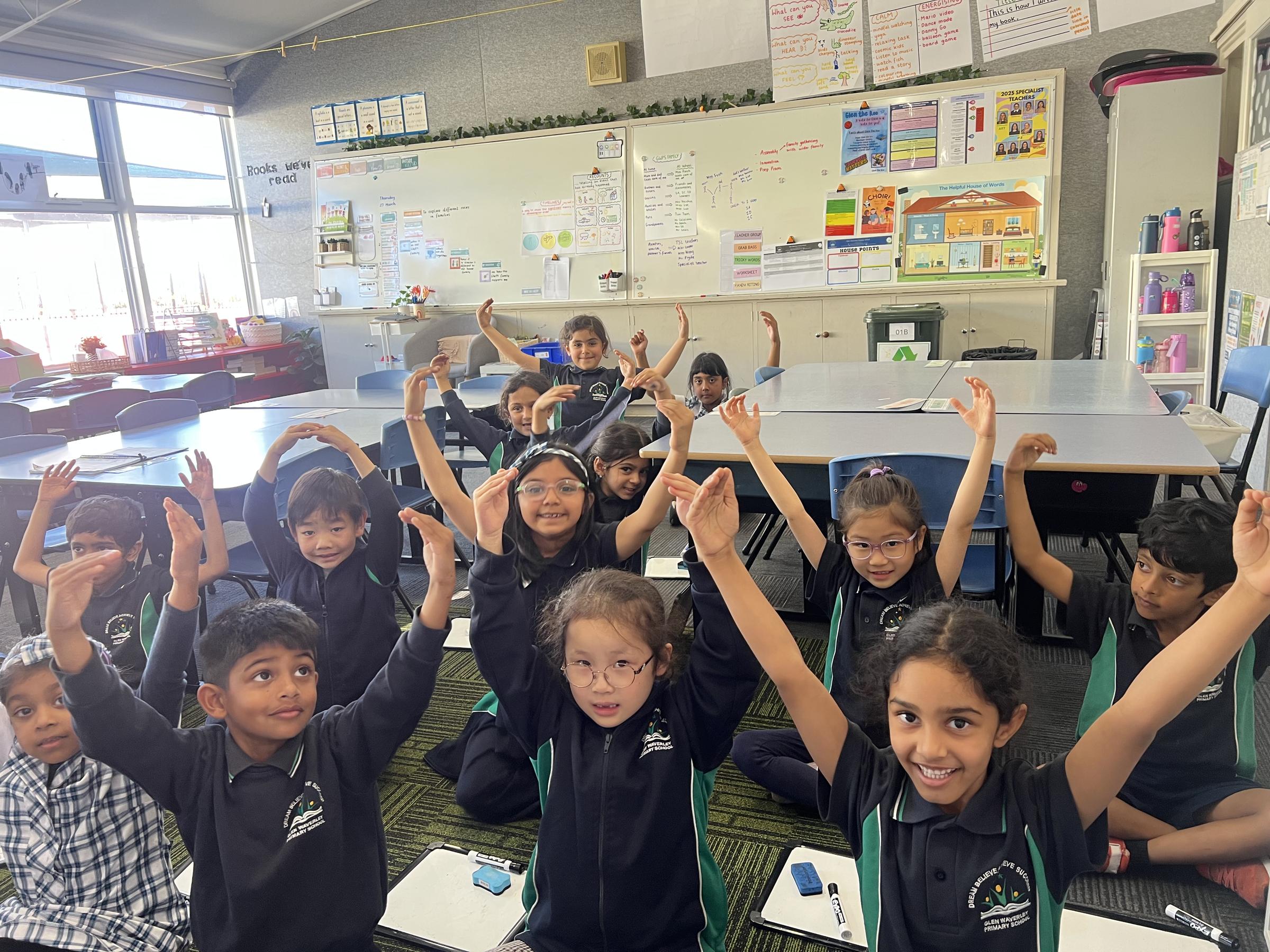
English: Initial Lit
In Term Two, we will be continuing our InitiaLit program. Each week learners engage with five focus lessons. These focus lessons will introduce them to new phonemes such as long vowel sounds and split digraphs, as well as base words and suffixes. Learners will also explore different text types in our two Storybook lessons each week. These storybooks will expose learners to imaginative, persuasive and informative text types. Each lesson will unpack key Reading comprehension skills such as questioning, predicting, inquiring into new vocabulary and summarising texts.
Following the philosophy of the InitiaLit program and to support learners in their acquisition of the English language, learners will continue to interact with five Spelling words each week in their Home Learning. The set spelling tasks will encourage learners to apply the phonemes (sounds) they have been exposed to in the InitiaLit program rather than simply memorise the words. For your reference, the phonemes students have learnt so far include:
Note to use this table: Letters without brackets next to them indicate that we have learned the basic sound that the letter makes at the beginning of a word (e.g., the letter K makes the /k/ sound, as in ‘king’). Letter combinations followed by a word in brackets show the different sounds those letters can make. For example, th can make a unvoiced /th/ sound like in ‘thumb’ or a voiced /th/ sound like in ‘feather.’
| s | m | t | a | p | i | f | r | |
| o | c | d | h | e | n | g | l | |
| k | u | b | j | qu | v | w | x | |
| y | z | ff (sniff) | ll (bell) | ss (hiss) | zz (buzz) | ck (duck) | sh (shell) | |
| wh (whale) | ch (chick) | th (thumb, feather) | oo (moon, book) | ng (swing) | ai (rain) | ay (play) |
Key Vocabulary:
- Homophones
- Adjectives
- Plurals
- Verbs
To support your child’s learning at home, you could engage in the following:
- Listen to your child read their reader each day and invite them to record this in their Reading Diary.
- Encourage learners to read their reader or a book more than once, using the first reading to decode unknown words and explore the meaning and the second reading opportunity to understand the text and connect it to their life.
- Pause at the front cover or various stages of a book or movie and predict what might happen next with your child.
- Access the ‘MultiLit e-library', which offers a range of decodable texts. Review the discussion questions at the end of each book to support students' reading comprehension.
Writing
In Term Two, students will begin with investigating Persuasive Writing, focusing on distinguishing between facts and opinions. Students will learn how to structure a convincing argument by supporting their viewpoints with logical reasons and relevant examples. They will explore persuasive language techniques to strengthen their writing and develop confidence in expressing their ideas. To bring their learning to life, students will participate in lively debates, craft compelling arguments, and analyse real-world examples of persuasion. They will also consider multiple perspectives and critically evaluate evidence, fostering essential critical thinking skills that will benefit them both academically and beyond the classroom.
Later in the term, students will delve into Informative Reports, strengthening their understanding of factual writing and utilising a variety of non-fiction sources. They will develop essential research skills, exploring a variety of books and resources to gather and present information effectively. As part of their Inquiry learning, students will investigate their class pets, organising their findings under relevant headings to create well-structured reports. They will also explore different ways to present information, including labelled diagrams and illustrations, to enhance clarity and engagement for their audience.
Key Vocabulary:
Persuasive
- Opinion
- Persuasive Language
Information Reports
- Fiction vs non-fiction books
- Fact
- Diagram
- Headings
To support your child’s learning at home, you could:
- Explore real-life examples of persuasive writing, such as advertisements, opinion pieces, and social media posts.
- Write a persuasive piece on a topic of interest using their opinions and persuasive language to convince the reader.
- Examine informational texts found in daily life, such as newspaper articles, instructional manuals, fictions vs non fictions books and/or videos and online resources.
Mathematics
Mathematics in Term Two will provide students with the opportunity to consolidate their Counting and Place Value knowledge as well as their Addition and Subtraction knowledge. Students will build on the skills taught in Term One, demonstrating the various ways numbers can be partitioned into two, three or more parts. They will identify one more, one less, ten more or ten less for a given number. Students will be introduced to the concept of equivalence and will be taught that equals means “is equal to” rather than the answer is coming next. They will also explore the concept and symbol for addition. Students will explore “difference” number stories and “take away” number stories, noting that the subtraction symbol can mean a variety of strategies can be used.
Students will also learn about Measurement, including length, mass, capacity and duration. Using many resources and opportunities for hands on exploration, they will use direct and indirect comparison and informal units to describe which items are longer or shorter in length, heavier or lighter in mass and contain more or less in capacity. Students will act out familiar events to determine their duration of time and will compare and contrast the length of time each event takes.
Key Vocabulary:
Counting and Place Value:
- Hundreds, Tens, Ones
- Base-10 blocks or Multibase Arithmetic Blocks (MAB)
Addition and Subtraction
- Addition (not plus)
- Subtraction (not minus)
- Take away
- Difference
- Equivalence
- Equals
- Is equal to
Measurement
- Same as
- Length
- Mass
- Heavier and Lighter
- Hefting
- Capacity
- More and Less
- Duration
- Longer and Shorter
How can you support your child’s Mathematics learning at home?
- Use everyday opportunities to talk about numbers, such as breaking them into tens and ones (e.g., 25 = 20 + 5) and ask your child to explain their thinking.
- Play games like rolling dice to add or subtract numbers or use real-life scenarios like counting change or comparing quantities in the kitchen.
- Use everyday items and opportunities to informally measure such as ‘Which glass will hold more water?’ Or ‘Do you think the fork or the knife is longer?’
Inquiry
Question: How do my choices affect living things?
Global Goal: 15. Life on Land
The Term Two Inquiry unit will focus on the topic ‘How do my choices affect living things’. We will be developing our understanding of living and non-living things and investigate how our choices affect them. Students will explore their ideal learning environment and the choices they have available to them. They will investigate choices involved in creating an ideal environment through the adoption of a class pet. Students will observe and care for a class pet, learning about the essential requirements for the animals’ survival, what they can do to allow them to thrive and how the pet might feel in response to their actions. The learners will analyse the design of equipment to determine the suitability for animals and if an animal can survive and thrive while using the equipment. Learners will use their knowledge to create an information report to instruct others on the importance of caring for their chosen pet, and the tips and tricks they have learnt on their pet care journey.
Key Vocabulary:
- Living and Non-living
- Choices
- Environment
- Surviving
- Thriving
- Empathy
How can you support your child’s Inquiry learning at home?
- Engage in discussion with your child about their inquiry learning using questions to prompt your conversation:
- What is the difference between living and non-living things?
- What are the basic needs of living things?
- How did you care for your class pet today?
- Go to a working farm, zoo, local park or even your own backyard and invite your child to explore the living things they can see.
- What living things are in this environment?
- Do they all need the same things to survive?
- What do these living things need to thrive?
Wellbeing
This term, students will continue to explore the key principles of The Resilience Project: Gratitude, Empathy, Mindfulness, and Emotional Literacy. Through engaging lessons, they will learn to recognise and name their emotions and develop healthy ways to express and manage them. They will practice mindfulness techniques, such as belly breathing, to help regulate their emotions and stay balanced. In addition, students will focus on the importance of empathy in resolving conflicts, making kind and fair choices, and understanding different perspectives. By identifying their personal strengths and qualities, they will also develop a sense of gratitude towards themselves and others, contributing to a positive and supportive classroom environment.
Students will also learn about digital safety through the Cyber Safety Program, focusing on becoming responsible and respectful digital citizens. They will explore the importance of asking permission before engaging in online activities and recognising when adult guidance is needed. Additionally, they will examine ethical dilemmas and practice positive communication in conflict to develop safe and respectful online habits.
Key Vocabulary:
- Gratitude
- Empathy
- Mindfulness
- Emotional Literacy
- Resilience
- Relationships
To reinforce these concepts, here are some ways you can support your child’s learning at home:
- Encourage open discussions: Ask your child about their emotions and help them name and express them in healthy ways.
- Practice empathy together: Role-play different scenarios where empathy and compromise can be applied, such as sharing toys or solving a disagreement.
- Engage in mindfulness exercises: Try belly breathing or body scans before bedtime to help with relaxation and emotional regulation.
- Discuss online safety: Talk about the importance of asking permission before sharing information online and making responsible choices.


